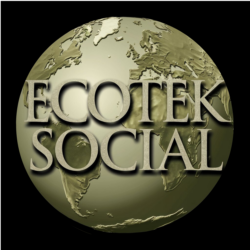How to Balance Exploration and Revenue-Driven Goals in a Fast-Paced Industry
In an industry as exhilarating and fast-paced as AI, it can feel like there’s a new development, tool, or update almost every day. As exciting as these innovations are, they can also become a major distraction, pulling focus away from core business goals. For those of us working in digital marketing, AI, or tech-driven industries, this constant influx of new possibilities can become overwhelming.
After years of working with time-blocking methods on my calendar, I still found myself struggling to manage it all. Like many, I was often caught between wanting to experiment with new tools and needing to stay grounded in the tasks that actually grow my business. That’s why I’ve started incorporating Focus Blocks and Flex Blocks into my schedule—a new time-management strategy that could be the missing piece to balancing growth with creativity.
In this post, I’ll share how to adopt these strategies to stay on track with revenue-generating tasks, and still make room for exploration. Whether you’re a marketing agency, Shopify store owner, course creator, or coach, these principles can help you manage your time effectively without feeling the need to chase every shiny new AI tool that emerges.
Define Your Core Objectives and Stick to Them
When every new trend and tool feels essential, it’s critical to define core business objectives that will guide decision-making. These objectives should be the tasks directly tied to revenue generation and sustainable growth.
- Set Revenue-Centric Goals: Start by identifying the goals that drive your business forward—tasks like client projects, content creation, product management, or customer engagement. These are the core activities that, if done consistently, will grow your business.
- Separate Core Goals from Exploratory Tasks: Clearly distinguish between “essential tasks” and “exploratory tasks.” Essential tasks directly impact revenue and customer satisfaction, while exploratory tasks are more about personal development or experimenting with new tools.
- Create a “Why” Statement for Each Project: When you define a task, remind yourself of its importance by crafting a quick “why” statement. This will help you stay focused and resist the urge to chase unrelated ideas.
- Example for a Marketing Agency: “This client campaign increases brand visibility, which directly supports our growth goals.”
- Example for a Shopify Store Owner: “Improving product listings with SEO optimizations increases organic traffic and sales.”
- Personal Experience: I’ve found that using a “why” statement brings clarity to my tasks, especially when I’m tempted to dive into something new.
Utilize Work Blocks with a Twist: The Power of ‘Focus Blocks’ and ‘Flex Blocks’
While I’ve used traditional time blocking for years, I found that adding a twist—Focus Blocks and Flex Blocks—helped me better manage my week and set boundaries on my time.
- Dedicated Focus Blocks: These are unbreakable blocks of time reserved for essential business activities. During Focus Blocks, all distractions are put on hold, and the only goal is to execute on high-impact tasks that align with your core objectives.
- Flex Blocks for Exploration: Flex Blocks are designated times for curiosity-driven activities like researching new AI tools, exploring the latest trends, or watching an interesting webinar. Knowing you’ll have time for exploration can reduce the urge to deviate from priority work during Focus Blocks.
- End Each Block with a Quick Reflection: After each work block, do a quick review of your progress. Did you stay on track? Could you adjust anything to improve productivity?
- Example for a Content Creator: Use Focus Blocks for creating content and interacting with followers, while Flex Blocks could be used to test new editing software or review analytics tools.
- Example for a Coach: Focus Blocks could be spent on client calls or creating new coaching materials, while Flex Blocks allow time to explore new methods or tools that could enhance client sessions.
Mastering the Art of Prioritization with a “Priority Ladder”
Not all tasks carry the same weight when it comes to driving business results. A Priority Ladder can help you organize tasks by their impact and urgency.
- Create a Priority Ladder: This is a simple list that ranks tasks by their importance to the business. The tasks at the top are high-priority, revenue-generating activities, while secondary tasks (like exploring new tools) are placed lower.
- Weekly Adjustment Sessions: Set aside time weekly to revisit your Priority Ladder, adjusting as needed based on any new goals or developments.
- Example for a Shopify Store Owner: Top priorities might include running ads, managing inventory, and updating product listings, while exploring new AI plugins for the website might be ranked lower.
- Example for a Marketing Agency: Client work, campaign reporting, and lead prospecting should be at the top, while testing new social media tools might fall lower until they prove beneficial for specific client goals.
Handling FOMO and Managing the Urge to Dive into Every New Trend
AI and digital marketing are particularly prone to FOMO. With new developments rolling out daily, it’s easy to feel left behind if you’re not constantly in the know. Here are strategies to manage the urge to dive into everything new:
- Limit Your ‘Shiny Object’ Intake: Choose a few reliable thought leaders or channels that provide high-quality updates in your industry, and stick to these sources.
- Focus on Content Aligned with Your Goals: Create a “To-Watch” list of content that aligns with your objectives. Review this list during Flex Blocks so you’re not consuming content randomly.
- Use Tools to Filter Information: News aggregators, keyword alerts, and AI-powered summaries can keep you informed without overwhelming you with irrelevant updates.
- Example for a Course Creator: Instead of chasing every new feature in learning platforms, focus only on updates that enhance your students’ learning experience.
- Example for a Marketing Agency: Stay tuned to trends directly related to your clients’ needs—like new ad formats or audience targeting features—rather than exploring unrelated updates.
Incorporate Reflection and Mindfulness Practices
Regular reflection is essential to ensure you’re not drifting off-course. Adding mindful practices like weekly reviews helps refine productivity and avoid burnout.
- End-of-Week Reviews: Set a dedicated time each week to evaluate what went well, what didn’t, and any adjustments for the upcoming week. I’ve found this to be a vital practice for keeping my workflow in tune with my goals.
- Mindful Goal Reassessment: Before diving into a new project, take a moment to check if it aligns with your core objectives. This moment of reflection can prevent getting swept up in ideas that don’t serve your business goals.
- Example for Coaches and Trainers: Use these reviews to assess how client sessions are progressing and identify areas for improvement. Flex time could then be spent exploring new coaching techniques.
- Example for Content Creators: Reflect on which content performed best and plan for the next week accordingly. Use Flex Blocks to test new tools or formats that support engagement.
Rewarding Discipline: Give Yourself Credit and Space to Celebrate Wins
Discipline deserves recognition, and celebrating small wins along the way makes it easier to stay focused.
- Set Small Wins for Core Tasks: Create small milestones tied to your core objectives and celebrate progress, which will reinforce discipline and motivation. For example, if you’ve consistently completed Focus Blocks for a week, reward yourself with a Flex Block dedicated to something fun and exploratory.
- Scheduled Exploration as a Reward: Treat exploration time as a reward for hitting your goals. Dive into new features or trends once your primary work is done.
- Example for a Shopify Store Owner: After a productive week of ad management and product updates, reward yourself by exploring a new AI feature for your store.
- Example for a Course Creator: Celebrate completing a module by experimenting with AI-driven tools that could enhance your content delivery.
Get Support: Build a Sustainable Workflow
Balancing focus and creativity in a fast-paced industry like AI is challenging but achievable. With core objectives, Focus and Flex Blocks, prioritization strategies, and regular reflection, you can build a sustainable workflow that supports business growth without sacrificing innovation. Structured flexibility keeps curiosity in check while allowing you to stay updated on industry developments guilt-free.
Struggling to balance focus with exploration in a rapidly evolving industry? EcoTek Social’s AI marketing and digital solutions can help streamline your strategy and build a sustainable, profitable workflow. Contact us today to unlock the potential of AI without the overwhelm!

